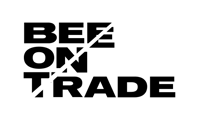If you are importing products from Canada into the US via truck, you will need to obtain a Pre-Arrival Processing System (PAPS) number
This number is used to track the shipment and facilitate the customs clearance process. You can obtain a PAPS number by contacting the CBP office at the port of entry where your shipment will be arriving. In addition to the PAPS number, you may also need to provide other documentation, such as a commercial invoice, packing list, and bill of lading, to clear your shipment through customs.
It is important to be aware of and comply with all applicable customs requirements when importing goods into the US, including those specific to shipments coming from Canada.
It is important to be aware of and comply with all applicable requirements when importing goods into the US, even if they are coming from a country that shares a border with the US such as Canada.
There are several steps that you can take to help expedite the delivery of your cargo and avoid common pitfalls, including obtaining a Pre-Arrival Processing System (PAPS) number for truck shipments.
If you are having your shipment flown into the US from Canada, the importing process will be the same as it would be for air shipments from any other country. You will need to follow the normal procedures for importing goods into the US, including obtaining any necessary permits or licenses, completing the required documentation, and paying applicable duties and fees.
If you are transporting your shipment across the border by truck, you will need to obtain a PAPS number in addition to completing the normal procedures for importing goods into the US.
The PAPS number is used to track your shipment and facilitate the customs clearance process. You can obtain a PAPS number by contacting the CBP office at the port of entry where your shipment will be arriving.
What is the PAPS number?
The Pre-Arrival Processing System (PAPS) number is a unique identifier assigned by US Customs to shipments that are being transported across the border by truck. It is used by Customs as a shipping control number (SCN) and by the customs brokers to clear the shipment through Customs.
The PAPS number is also included in the trucker's shipment manifest, which provides details on all of the shipments that the trucker will be transporting into the US. This manifest is submitted to US Customs before the trucker arrives at the border so that Customs is aware of the cargo that will be crossing the border.
When your trucker picks up your shipment from your supplier, your supplier should request the PAPS number. This must be provided to you along with the other documentation needed for your shipment to clear Customs, such as the commercial invoice and truck waybill.
You should then send this documentation, including the PAPS number, to your customs broker as soon as the shipment is picked up. Your broker must file the entry with Customs before the truck arrives at the border to facilitate the clearance process.
The trucker can bring the shipment past the Customs border checkpoint for clearance at a warehouse closer to the final destination under an Immediate Transportation (IT) arrangement.
However, this process may delay your shipment and involve additional fees ranging from $45 to $100 for filing and handling the IT. It is important to discuss these options with your customs broker and trucker to determine the best approach for your shipment.
Under the US-Mexico-Canada Agreement (USMCA), goods that are made entirely in Canada (and Mexico) may be eligible for duty-free treatment when imported into the US. However, it is the responsibility of the importer to prove that their goods meet the USMCA requirements.
One way to do this is by providing a USMCA Certificate of Origin, which is a standard form that can be used to show US Customs and Border Protection (CBP) that the goods qualify for duty-free treatment under the USMCA.
In addition to this certificate, there may also be marking requirements that need to be met for the goods to qualify for duty-free treatment. CBP may request additional proof of origin, such as purchase orders, production records, inventory records, and payment records, to verify that the goods qualify for USMCA treatment.
If you are not sure if your goods qualify for duty-free treatment under the USMCA, you can contact CBP at the border crossing or seek guidance from Beeontrade. CBP also has an official, in-depth publication on the USMCA that may be helpful.
